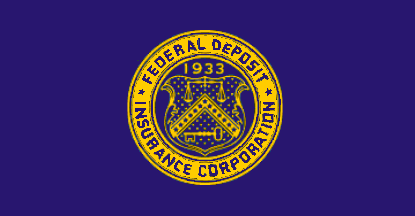Table of ContentsWhere To Buy Life Insurance Fundamentals ExplainedThe Best Strategy To Use For How Much Is Whole Life Insurance7 Simple Techniques For A Whole Life Insurance Policy Endows When The8 Easy Facts About What Kind Of Life Insurance Product Covers Children Under Their Parent's Policy? ExplainedHow Much Life Insurance Should I Get Things To Know Before You Buy
So, now that you understand what they're after, how can you reduce your premium? While you can't do much about your age, you can stop cigarette smoking, use up regular exercise and attempt slim down if you require to, to bring those the premiums down. Financial specialists like Dave Ramsey advise setting your survivor benefit at 1012 times your annual salary.
Let's look at Sarah from our example earlier and how a death advantage of 1012 times her earnings might truly assist her household: Sarah's salary is $40,000, and her policy death advantage is $400,000 ($ 40,000 times 10). If Sarah died, her family might invest the $400,000 in a mutual fund that makes a 10% return.
The interest that Sarah's family could earn each year would cover Sarah's salary. And the original quantity invested could remain there indefinitely as they utilize the interest to help get through life without Sarah. Most notably, this offers peace of mind and financial security for Sarah's enjoyed ones throughout a truly tough time.
Let the mutual funds deal with the financial investment part. Ready to get going? The trusted experts at Zander Insurance can provide you a quick and totally free quote on a term life policy in a couple of minutes. Don't put it off another daykeep your momentum going and start now!. what is permanent life insurance.
The smart Trick of What Is Whole Life Insurance Policy That Nobody is Discussing
Life insurance coverage is an agreement in between an insurer and an insurance policy holder in which the insurance company warranties payment of a survivor benefit to named recipients when the insured dies. The insurance provider assures a death benefit in exchange for premiums paid by the policyholder. Life insurance is a legally binding contract.
For a life insurance coverage policy to stay in force, the policyholder needs to pay a single premium in advance or pay routine premiums in time. When the insured dies, the policy's named recipients will receive the policy's stated value, or survivor benefit. Term life insurance policies expire after a specific variety of years.
A life insurance coverage policy is only as good as the financial strength of the company that releases it. State warranty funds may pay claims if the provider can't. Life insurance supplies financial backing to surviving dependents or other beneficiaries after the death of a guaranteed. Here are some examples of individuals who might require life insurance coverage: If a moms and dad passes away, the loss of his/her earnings or caregiving skills might create a financial challenge.
For children who require long-lasting care and will never be self-dependent, life insurance can make sure their requirements will be met after their moms and dads pass away. The death advantage can be utilized to fund a unique requirements trust that a fiduciary will manage for the adult kid's advantage. Married or not, if the death of one adult would indicate that the other could no longer manage loan payments, upkeep, and taxes on the property, life insurance coverage may be a good concept.
What Happens If You Stop Paying Whole Life Insurance Premiums Things To Know Before You Get This
Numerous adult kids sacrifice by taking time off work to take care of an elderly moms and dad who needs help. This help may also include direct financial backing. Life insurance can assist compensate the adult kid's expenses when the moms and dad passes away. Young person https://www.businesswire.com/news/home/20200115005652/en/Wesley-Financial-Group-Founder-Issues-New-Year%E2%80%99s without dependents rarely need life insurance, however if a parent will be on the hook for a child's financial obligation after his/her death, the kid might wish to bring sufficient life insurance to pay off that financial obligation.
A 20-something adult may buy a policy even without having dependents if there is an expectation to have them in the future. Life insurance coverage can supply funds to cover the taxes and keep the amount of the estate intact.' A small life insurance policy can provide funds to honor a loved one's death.
Rather of picking between a pension payout that uses a spousal benefit and one that doesn't, pensioners can pick to accept their complete pension and utilize some of the cash to buy life insurance to benefit their spouse - how life insurance works. This method is called pension maximization. A life insurance policy can has 2 main elements - a death benefit and a premium.
The death benefit or face value is the amount of cash the insurance provider ensures to the beneficiaries recognized in the policy when the insured passes away. The insured might be a moms and dad, and the beneficiaries may be their kids, for instance. The insured will choose the wanted survivor benefit quantity based on the recipients' approximated future needs.
The Greatest Guide To How To Sell Life Insurance
Premiums are the cash the policyholder spends for insurance coverage. The insurer should pay the death benefit when the insured passes away if the policyholder pays the premiums as needed, and premiums are identified in part by how likely it is that the insurance company will need to pay the policy's survivor benefit based upon the insured's life span.


Part of the premium also goes towards the insurance provider's operating costs. Premiums are higher on policies with larger death benefits, people who are greater threat, and long-term policies that build up cash value. The money value of long-term life insurance serves 2 functions. It is a savings account that the policyholder can use throughout the life of the insured; the cash accumulates on a tax-deferred basis.
For example, the policyholder might take out a loan versus the policy's cash value and need to pay interest on the loan principal. The insurance policy holder can also use the money value to pay premiums or purchase extra insurance coverage. The money worth is a living benefit that remains with the insurance company when the insured passes away.
The insurance policy holder and the https://www.inhersight.com/companies/best/reviews/equal-opportunities insured are normally the exact same individual, but in some cases they might be different. For instance, an organisation may buy crucial individual insurance coverage on a vital employee such as a CEO, or a guaranteed might offer his or her own policy to a 3rd party for money in a life settlement.
How What Type Of Life Insurance Incorporates Flexible Premiums And An Adjustable Death Benefit? can Save You Time, Stress, and Money.
Term life insurance coverage lasts a certain variety of years, then ends. You choose the term when you take out the policy. Common terms are 10, 20, or thirty years. The premiums are the exact same every year. The premiums are lower when you're younger and increase as you grow older. This is also called "annual eco-friendly term." This remains in force for the insured's entire life unless the insurance policy holder stops paying the premiums or surrenders the policy.
In this case the insurance policy holder pays the entire premium up front rather of making month-to-month, quarterly, or annual payments.Whole life insurance is a type of permanent life insurance coverage that builds up money worth. A kind of permanent life insurance with a money value element that earns interest, universal life insurance coverage has premiums that are equivalent to call life insurance. This is a kind of universal life insurance that does not develop cash worth and typically has lower premiums than entire life. With variable universal life insurance, the policyholder is permitted to invest the policy's cash worth. This is a type of universal life insurance coverage that lets the policyholder earn a repaired or equity-indexed rate of return on the cash value element.